Video MGMT System
 Access Control
Access Control
Voice & Data Wiring
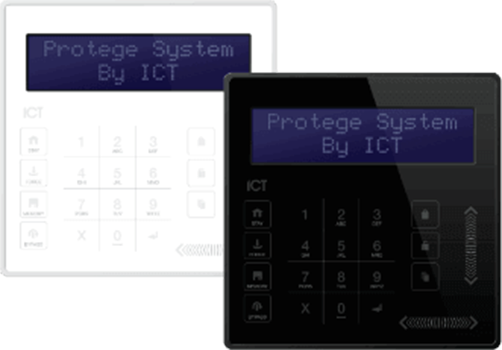 Burglar Alarm
Burglar Alarm
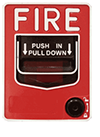 Fire Alarm
Fire Alarm
Video MGMT System
Voice & Data Wiring
Commercial intercom systems connect site entrances with internal intercom substations so that visitors can contact staff or residents to request entry. These systems should be integrated with electronic access control so that authorized people can unlock doors remotely.
By requiring that visitors announce themselves before being granted entry, intercom systems prevent unauthorized access to secure premises.
Intercoms enable efficient entry management because they don't require staff or residents to walk all the way to an entrance to allow entry. Instead, doors are unlocked via electronic signals transmitted from intercom substations.
Most commercial intercom systems are built for integration with other communication and security systems, such as those for visitor management and electronic access control.
Integrations allow data-sharing between devices and connect diverse systems on a central interface for easy administrative management.
Base, or master, stations for intercoms are installed at building entrances and other sensitive entry points. Outside visitors use intercom base stations to communicate with people on the inside, usually to request entry.
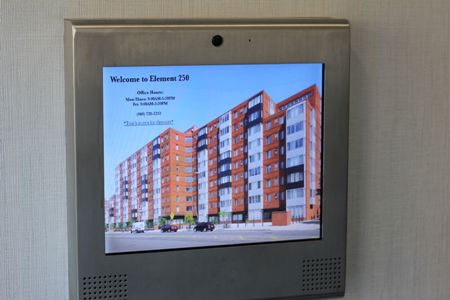
Video intercom base stations feature cameras and screen displays, and most base stations—for both video and audio-only intercom systems—include speakers, amplifiers, volume controls, and call buttons or touch screens connected with substation selector switches. Substation selector switches enable people at base stations to connect with specified individuals, apartment units, or work areas via low-voltage cabling.
While base stations are installed at entrances, intercom substations are installed throughout properties. People use base station call buttons or touchscreens to select specific intercom substations they'd like to communicate with.
Substations feature two-way audio and sometimes display screens and cameras to enable communication with base stations.
There are two main types of commercial intercoms: video intercoms and two-way audio intercoms.
Video intercom systems are highly recommended because they provide the situational awareness needed for top-grade security. By communicating via video in real-time, building staff and residents are able to verify identities before unlocking doors.
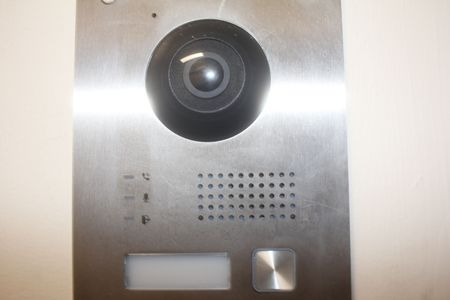
A commercial video intercom system usually consists of video cameras, display screens, audio tools, a control panel, low-voltage cabling, and intercom substations.
As the name suggests, two-way audio intercom systems allow for two-way audio communications but lack video features.
The main components of audio intercom systems are speakers, microphones, low-voltage cabling, intercom stations, and a control panel.
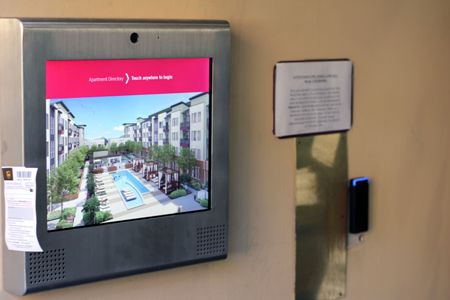
Commercial intercom systems empower staff and residents to gather information from visitors before deciding whether to grant or deny entry.
By connecting directly with front offices and specific staff or residents, commercial intercom systems give visitors a convenient method for contacting the persons or departments they need.
Most commercial intercom system features include the same RFID (Radio-Frequency Identification) signal technology used by access control credentials. Access control credential systems, such as those that use RFID signal technology, allow authorized personnel or residents to enter facilities without requesting access through an intercom.

Only install commercial intercom systems that can be customized and integrated with other security systems, such as those for access control and video surveillance.
Our friendly experts here at Mammoth Security can help you to select a commercial intercom system that's customizable, easy to scale, and compatible with other security and building management systems.
Weatherproof installations are often necessary for intercoms in exposed outdoor environments.
Specialized weatherproof intercoms are constructed with weather-resistant materials, such as stainless steel, and feature gaskets and seals that prevent moisture from damaging the system.
Intercom enclosures are the most cost-effective solution for protecting outdoor intercoms from the elements, and they come in a variety of sizes to fit a wide range of intercoms.
Residents, employees, and visitors simply need to open the enclosure lid to access the intercom.

Waterproof conduit tubes and connectors protect outdoor low-voltage wiring that connects intercoms, power sources, and control panels.
Two-way audio intercoms are adequate for most budget installations, but video intercom systems have the security features necessary for detailed situational awareness. Video intercoms are more expensive than their audio-only counterparts because they have more complex hardware (e.g., high-resolution displays) and more installation and configuration requirements.

Our crew at Mammoth Security has the knowledge and experience to help you select and properly install the ideal intercom system for your business security and entry management needs. With the right security system in place, you'll streamline communications, improve productivity, and create a more secure and convenient environment for employees, visitors, and residents.

Wireless
IP Cameras
Wireless cameras are not reliable enough for commercial use yet. Instead, we use purpose-built antennae to connect hardwired cameras on light poles and buildings.

Phone App
For Camera Systems
Watch live or previously recorded footage on any mobile device. Save it to your phone and e-mail it just like any other video or image.

Increased Resolution
Of 4096×2160
4k or 8MP cameras represent the best value at the moment. Depending on your situation, a 30+ megapixel camera can be installed allowing you to read a seat number from the opposite end of a football field.

Employ The Same Technology As These Companies:


